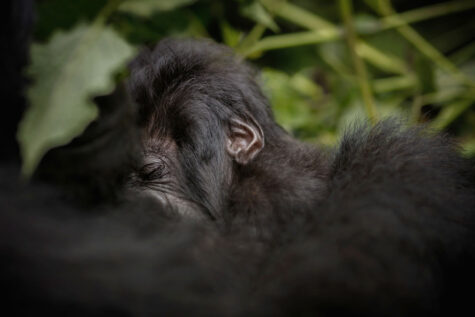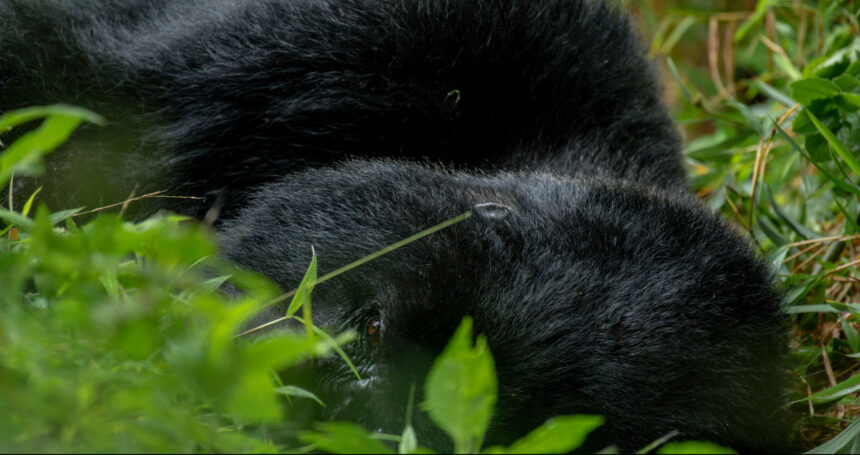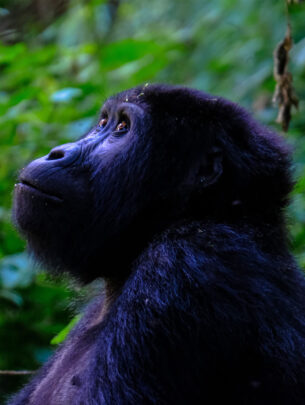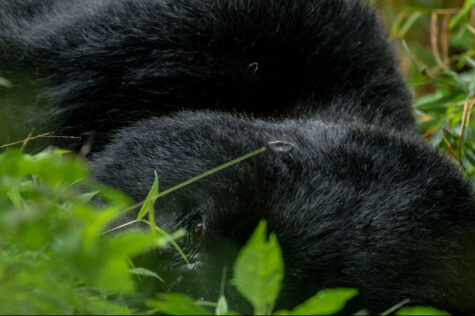Ultimate guide to Gorilla Trekking in Uganda
Uganda, renowned for its lush landscapes and rich biodiversity, is a sanctuary for one of the world’s most captivating creatures: the mountain gorilla. Within the green depths of Bwindi Impenetrable National Park and Mgahinga Gorilla National Park, numerous gorilla families thrive, each with its unique dynamics and stories.
Uganda Gorilla Trekking Destinations

Bwindi Gorilla Forest
Broad diversity in nature with different animal life like Gorillas, monkeys, elephants, baboons plus a group of 300 bird species
Bwindi Impenetrable National Park
Located in southwestern Uganda, Bwindi is a World Heritage Site known for its dense forest and biodiversity, especially as a key habitat for mountain gorillas. The park is divided into four main gorilla trekking sectors: Buhoma, Ruhija, Rushaga, and Nkuringo. Below is a summary of the gorilla families in each sector:
1. Buhoma Sector
- Mubare Family: The first gorilla group habituated for tourism, now led by a dominant silverback with six members.
- Rushegura Family: A large group of over 20 members, known for visiting lodges near Bwindi.
- Muyambi Family: A newer group started by a silverback from the Mubare family.
- Katwe Family: Formed by members who broke away from the Mubare family.
- Habinyanja Family: Known for adventurous members, led by a silverback, Makara.
- Binyindo Family: Habituated in 2019, this group has six members.
2. Ruhija Sector
- Bitukura Family: A peaceful group of 14 members, named after the river where they were discovered.
- Oruzogo Family: A popular 16-member family, known for playful young gorillas.
- Kyaguliro Family: Research-focused, this family split into two subgroups led by different silverbacks.
- Mukiza Family: A breakaway from the Kyaguliro family, closely studied by researchers.
3. Rushaga Sector
- Nshongi Family: Once the largest group, now reduced to 18 members after splits.
- Bweza Family: Originally part of the Nshongi family, led by the silverback Kakono.
- Mucunguzi Family: Led by a silverback who started his own group after leaving the Bweza family.
- Kahungye Family: A large family, known for having several silverbacks.
- Bikingi Family: Still undergoing habituation, with a mix of habituated and wild members.
- Mishaya Family: Formed in 2010 but scattered after the death of its leader in 2014.
- Kutu Family: Recently opened for tourism, with 8 members.
- Busingye Family: Broke off from the Kahungye family, preferring secluded areas.
- Rwigi Family: Formed after a silverback split from the Kahungye group.
4. Nkuringo Sector
- Nkuringo Family: A large group of 19 members, known for the challenging trek to reach them.
- Posho Family: Currently undergoing habituation, with 17 members.
- Bushaho Family: Originally part of the Nkuringo group, led by a silverback named Bahati.
- Christmas Family: A small, elusive group named after its dominant silverback.
5. Mgahinga National Park:
- Nyakagezi Family: The only gorilla family in Mgahinga, known for their nomadic lifestyle, occasionally crossing into Rwanda and DRC
Gorilla Family Structure Summary
Gorilla families are led by a dominant silverback, who is responsible for leadership, protection, and mating. Other family members include blackbacks (younger males), sub-adults (teenagers), females, and infants, each playing specific roles in group survival.
- Silverback: The alpha male who leads and protects the group. He decides where the family will feed and rest, defends them from threats, and has exclusive mating rights.
- Blackbacks: Younger males that assist the silverback and prepare to become leaders themselves.
- Sub-adults: Adolescent gorillas learning social and survival skills.
- Females: Key to child-rearing and maintaining group harmony. They help find food, resolve conflicts, and ensure the young gorillas grow up healthy. Female gorillas also have their own hierarchy and contribute to social stability.
In Uganda’s Bwindi and Mgahinga National Parks, female gorillas play vital roles in nurturing the young, feeding the family, and ensuring the group's overall well-being.
The Daily Life of a Gorilla
Gorillas are fascinating and intelligent animals with a daily routine that helps them survive and thrive in the wild. Here's a simple breakdown of how a typical day might go for them in the forests:
Gorillas wake up around 6 to 7 AM from nests made of leaves and branches. Like humans, their first task is breakfast. Being herbivores, they search for food like leaves, fruits, flowers, and shoots, using their strong hands to gather it.
After eating, they spend time bonding, grooming, playing, and resting. Much of their day is devoted to feeding, and visitors can often observe them munching throughout the day.
Gorillas spend time bonding, grooming each other to remove parasites. Grooming is important to their social life and can last for hours. While some groom, others rest or play, especially the younger ones, who often chase, climb, and mock fight to develop their physical and social skills.

During mating season, adult gorillas mate, and females breastfeed their babies. In the afternoon, they may move to find fresh food, traveling several kilometers in their territory, using their senses to stay alert to any threats.
As the sun sets, they have their final meal of the day, eating vegetation that gives them energy. They then build nests from leaves and branches, either in trees or on the ground, to rest for the night. The Silverback ensures the group’s safety and often keeps watch while the others sleep.
Gorilla Trekking and Gorilla Habituation in Uganda
Uganda is home to about half of the world’s mountain gorillas, and their population is steadily increasing due to conservation efforts. The Uganda Wildlife Authority (UWA) manages gorilla habitats and is responsible for issuing permits for gorilla trekking, which can only be purchased in advance from licensed tourism companies. Bwindi and Mgahinga National Parks host several gorilla families, each led by a dominant silverback.
Many gorilla families have been habituated to human presence, allowing tourists to observe them up close. A regular gorilla trek offers one hour with the gorillas, while a special "habituation experience" allows four hours. Permits are limited to protect the gorillas, and visitors must follow strict guidelines to minimize impact.
On the day of the trek, tourists are divided into small groups and led by rangers into the forest. After some effort, encountering the gorillas in their natural habitat is a rewarding experience, as guests watch their interactions and behaviors up close. After the trek, visitors return to the park headquarters and receive a certificate.
Gorilla trekking is a key ecotourism activity that supports both wildlife conservation and local communities. Revenue from tourism creates jobs for locals and boosts the economy, while gorillas hold cultural significance for many communities in the region.

Tour Ideas for Every Travel Style
Explore our tours based on what you like. Whether you want to trek with gorillas, go on wildlife tours, experience local cultures, or something else, we have the perfect trip for you
BROWSE ALL TOURS
Talk to an expert
Our Travel Specialists are experts in East Africa adventures. They can answer your questions and help you pick the perfect trip. Contact us to learn more or book your trip today!

If you need any help highlighting the experiences or creating memorable safari, feel free to ask!
CONTACT INFORMATION
© 2024 Berengei African Safaris | Crafted by Robylinks Solutions

